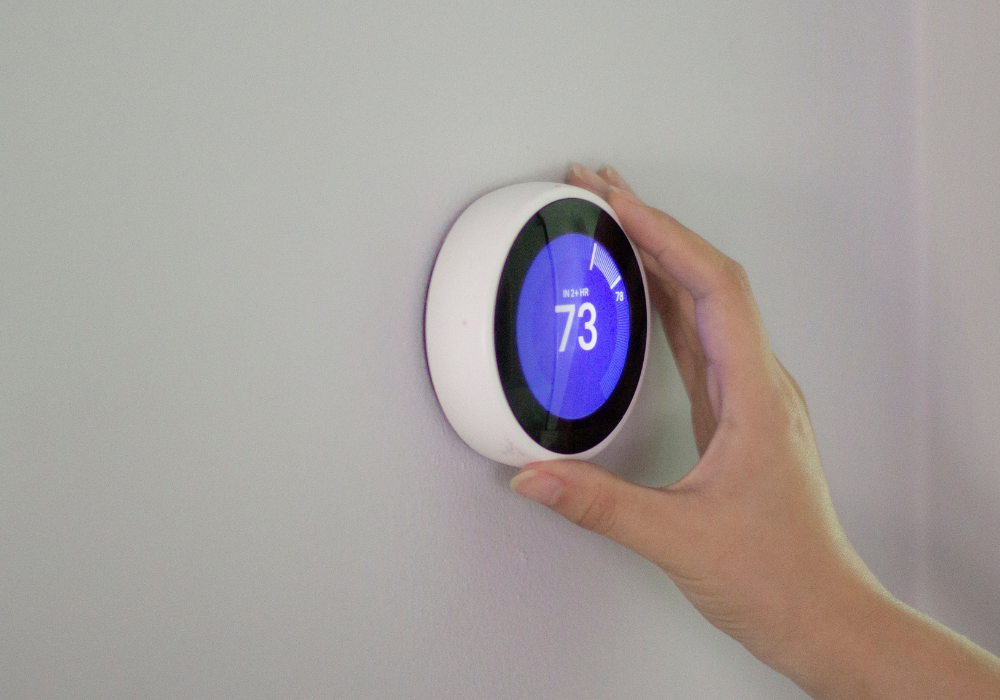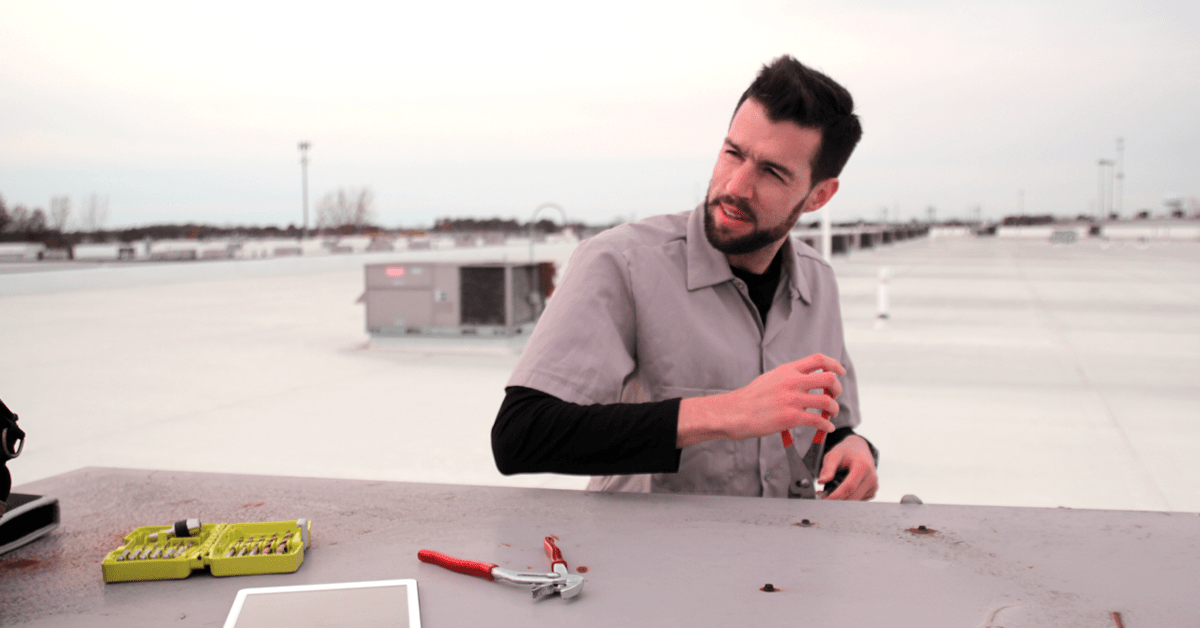Common HVAC Myths and HVAC Mistakes Newer Techs Make
By Randy Breneman on Friday, May 7, 2021What are some rookie mistakes in the HVAC industry? We've got a list!
Whether you’ve worked in the HVAC industry for twenty years or just one, at some point you had to learn the ropes. There is a vast amount of knowledge that you can acquire related to this industry. Most of it, you’ll learn by doing, but in this article, we’ll try to head off a few common issues at the pass. Check out our list of common mistakes and misconceptions that can trip up newer technicians.
When it comes to HVAC systems, bigger is not always better.
One of the most common mistakes, especially when starting out in the HVAC industry, is thinking that a bigger system is always going to be better for a home. In some cases, it can actually be worse. This can create an issue called “short cycling.” Short cycling means that the system will turn on and shut off prematurely on a frequent basis. This can damage the system in the long run, and may even cost a bit more in terms of energy consumption, since HVAC systems typically use the most power when they first turn on to begin the cooling/heating process.
Additionally, larger HVAC systems are often more expensive to purchase and operate, and they can be less efficient than smaller units. Large HVAC systems can also be more difficult to install and maintain. As a result, it is important to carefully consider the size of HVAC system that is right for your needs. With careful planning, you can ensure that your HVAC system will be both effective and efficient.
Duct tape is poorly named.
Duct tape is one of the most versatile and widely used tools in the world. Its sticky surface can be used to secure a wide range of materials, from paper to plastic. However, duct tape is actually poorly named. The word “duct” refers to a type of pipe used to transport various fluids. In fact, the original name of the product was “duck tape,” because it was made from cotton duck fabric.
Over time, the word “duck” was misheard as “duct,” and the name stuck. While duct tape may not be ideal for sealing ductwork, it remains an incredibly useful tool for a variety of applications. Thanks to its versatility and durability, duct tape has become an indispensable part of life for many people around the world (but not exactly for HVAC technicians).
Just going by the name, one might logically conclude that duct tape could be used to fix a damaged or leaking air duct. This is very far from the truth. Duct tape itself is actually not going to stick well to these kinds of surfaces. Moreover, it can peel off over time and can even melt when subjected to heat. Instead, use special aluminum foil tapes for issues that require some sort of adhesive.

There’s more to a house than square footage.
If you rely solely on the square footage of a home to recommend the size of a HVAC system your customer, then you may set yourself up for failure. Many other factors come into play when determining the appropriate system. You need to consider elements like insulation, ceiling height, ductwork, air leakage, windows (along with their size, condition and orientation), and ventilation. If the home has the wrong sized system, the customer can experience issues in the future.
A good HVAC contractor will take all of these factors into consideration when sizing a system for a new home. They will also consider the future needs of the homeowners. For example, a young family may not need as large a system as an empty-nester couple. But if the couple plans to have grandchildren visit often, they may need a larger system to accommodate the extra people in the house.
Take air ventilation and circulation into account.
Sometimes, HVAC techs can focus too much on heating and cooling and fail to factor in other information related to the ventilation of the home. Balancing positive and negative air pressure in a home—along with general air circulation—is a key factor in making sure the air quality itself remains high. The ductwork also contributes to the general air quality of the home.
It’s important to take air ventilation and circulation into account when installing an HVAC system. Poor ventilation can lead to a number of problems, including stuffy air, musty odors, and reduced efficiency. HVAC experts recommend that homes have at least one square foot of ventilation for every 500 square feet of living space. This can be achieved through a combination of open windows, exhaust fans, and vents. Taking the time to ensure proper ventilation will result in a more comfortable home and a longer-lasting HVAC system.
Consider the thermostat’s location in the home.

The location of the thermostat in the home is actually a key factor in keeping the house at the best comfort level. Consider these four rules of thumb when deciding where the thermostat should go:
- It should be on an interior wall.
- Do not place it adjacent to any windows.
- It should not be placed in direct sunlight
- It should not be close to major appliances in the kitchen.
You want to keep the thermostat somewhere more neutral to avoid the influence of external factors, like a kitchen oven. If you position your thermostat with those points in mind, you can run the system at a steadier and more even level to keep the entire house comfortable.
Of course, these represent just a few of the pitfalls awaiting new HVAC techs. Once you’ve gotten a little more experience, this information will become something that you don’t even have to think about. The more informed you are about everything in the industry, the better you can communicate with your customers and build a solid client base that trusts you and your ideas.
The consequences of making mistakes with HVAC systems
HVAC systems are essential for maintaining a comfortable indoor environment.
However, HVAC systems can also be complex and expensive to operate. As a result, making a mistake with an HVAC system can have serious consequences. For example, if an HVAC system is not properly maintained, it can lead to reduced efficiency and increased energy costs.
HVAC systems that are not properly sized can lead to discomfort and even health problems. Whereas HVAC systems that are not installed correctly can be dangerous and cause property damage.
As you can see, it is important to be careful when working with HVAC systems. By taking the time to understand how they work and following best practices for installation and maintenance, you can avoid making costly mistakes.
When it comes to HVAC systems, there are a lot of myths and misinformation floating around. And unfortunately, many newer techs make mistakes that can have serious consequences.
One of the most common mistakes is trying to fix an issue without first understanding what’s causing it. This can lead to further problems and wasted time and money.
Another common mistake is using the wrong equipment or tools for the job. This can not only damage the equipment, but also result in poor performance and increased energy costs.
Lastly, some techs try to cut corners by not following proper safety procedures. This can lead to injuries and even death. So it’s important to always take safety seriously when working with HVAC systems.
What Every Technician Needs to Know About HVAC systems
HVAC systems are a critical part of any home or office, and it is important that they are running properly at all times. As a technician, it is your job to make sure that these systems are functioning properly and efficiently.
HVAC systems can be complex, but there are a few key things that every technician needs to know.
HVAC systems work by circulating air throughout a space. This helps to regulate temperature and remove any harmful airborne particles.
HVAC systems must be properly maintained in order to function properly. This includes regular cleaning and inspection of all components.
HVAC systems can be repaired if they break down. However, it is important to have the proper training and experience before attempting any repairs.
By understanding how HVAC systems work and knowing how to properly maintain and repair them, you can ensure that these vital systems always operate at peak performance.
Common Myths and Mistakes That Newer Technicians Make
One of the most common myths is that turning off the AC or heat will save money. In reality, this can actually end up costing more money in the long run. The reason for this is that when you turn off the AC or heat, the system has to work harder to cool or heat the house back up to the desired temperature. This can cause your energy bill to increase.
Another common mistake newer technicians make is not properly servicing the HVAC system. This can lead to the system not working as efficiently as it should and can also cause it to break down more often.
Some of the newer technicians may also believe that they need to constantly adjust the thermostat. This is not necessary and can actually cause the system to work less efficiently. If you find that your home is not comfortable, it is probably because the thermostat is set too low or too high.
Conclusion
When it comes to HVAC, remember that bigger is not always better. Taking air ventilation and circulation into account is essential, as well as thinking about the thermostat’s location in the home.
If you are a technician looking for more informative information, check out more HVAC articles on the Smart Service blog. Smart Service also offers HVAC software that can give technicians all the tools they would ever need in the field and more. HVAC software can help streamline everyday work processes and supercharge the capabilities of an HVAC technician. Try a free demo today!


